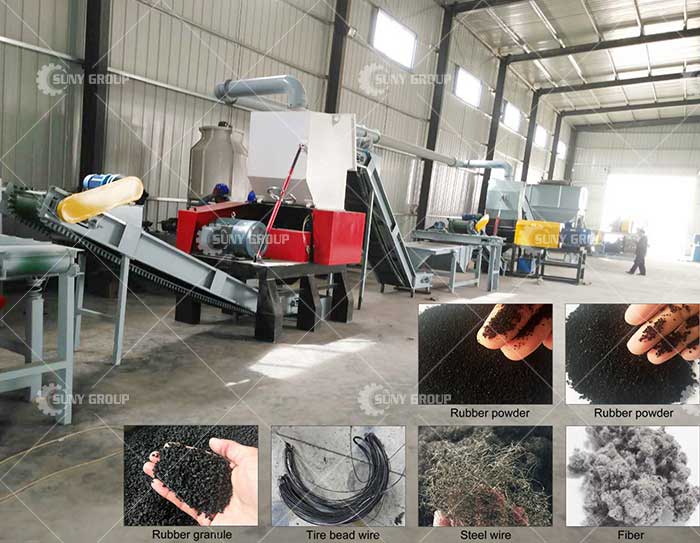Phone/Whatsapp: +86 19903886476
Email:zyunfei87@gmail.com
Waste car tire crushing and recycling production line
The waste tire recycling production line crushes waste automobile tires, and the particle size is below 60 mesh. The waste tire recycling production line is also known as a waste tire recycling and decomposition system in the industry, which can crush and decompose waste car tires, truck tires, motorcycle tires, etc. into rubber blocks, particles, steel wires, fibers, etc., according to market output demand. Designed 1T/H-6T/H. Customized service production can also be carried out according to actual needs. With the year-on-year growth of automobiles and the service life of tires, if scrap tires are not disposed of in time, it will not only cause solid pollution to the environment but also cause waste of resources. Tires are composed of rubber, fiber, steel wire, etc. The rubber and steel wire in tires , Fiber and other renewable recycling. The waste tire recycling production line is mainly divided into tire crushing, steel wire separation, pelletizing, packing and dust removal according to the composition structure and characteristics of the tire.
Conventional main equipment includes conveyor belt, double shaft shredder, steel wire separator, magnetic separator, crusher, vibrating screen, fiber separator, bagging system, dust removal system, electric control system, etc.
main feature:
1. Double-shaft shredder adopts inlaid knives, which improves production efficiency and reduces investment;
2. The two-step tooth cutting system combining crushing and wire grinding and cleaning separates rubber and wire;
3. Adopt dual magnetic separation steel wire separation equipment to improve work efficiency, reduce unclean separation, and improve steel wire recycling effect;
4. The rubber powder system is a specially designed slope ladder shear structure, equipped with alloy steel cutters, which improves the shearing effect and reduces the maintenance cost;
5. Multi-point fiber dust removal is used to gradually remove fibers and dust in multiple modules of the system; the pulse dust removal system uniformly collects the dust generated during the production process, and the discharge amount is less than 8 mg/m3, which meets the national standard;
6. It can be equipped with a sound insulation system to control the noise below 80 decibels;
7. Modular design of the entire system, which can be expanded or added or reduced according to production requirements;
8. The system is equipped with a spray fire prevention system to ensure safe production.



